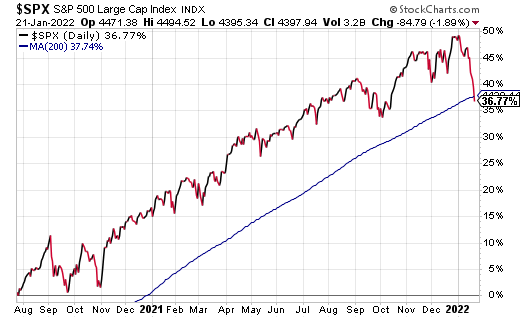via wolfstreet:
How often do we get a Bear Market after a strong bull market plunges to the 200-day moving average?
By Wisdom Seeker, WolfStreet Commenter with a physical sciences Ph.D., living in the San Francisco Bay Area, employed and anxious about his retirement portfolio.
Wild Bull: As measured by the S&P500, a stock market that has risen more than 30% in 18 months.
Hibernating Bear: The Wild Bull’s manic-depressive “dark side”, which often awakens when the market falls below its 200-day moving average.
Since mid-2020 the S&P500 index of large US stocks has been a Wild Bull, raging up over 40% in just 18 months. But as Wolf reported yesterday, over the past 3 weeks the Wild Bull stumbled badly. The figure below shows the 18 months up to yesterday, when the S&P fell to its trailing 200-day “moving average”, a common measure of market health. Such stumbles are both rare and frightening, since trillions of dollars in digital wealth evaporate in only a few weeks.
Worse, a drop below that 200-day moving average often reflects stark changes in market behavior – Hibernating Bear awakening – with potential for a long & deep bear market as in 2000-2003 or 2007-2009.
…
h/t mark000
